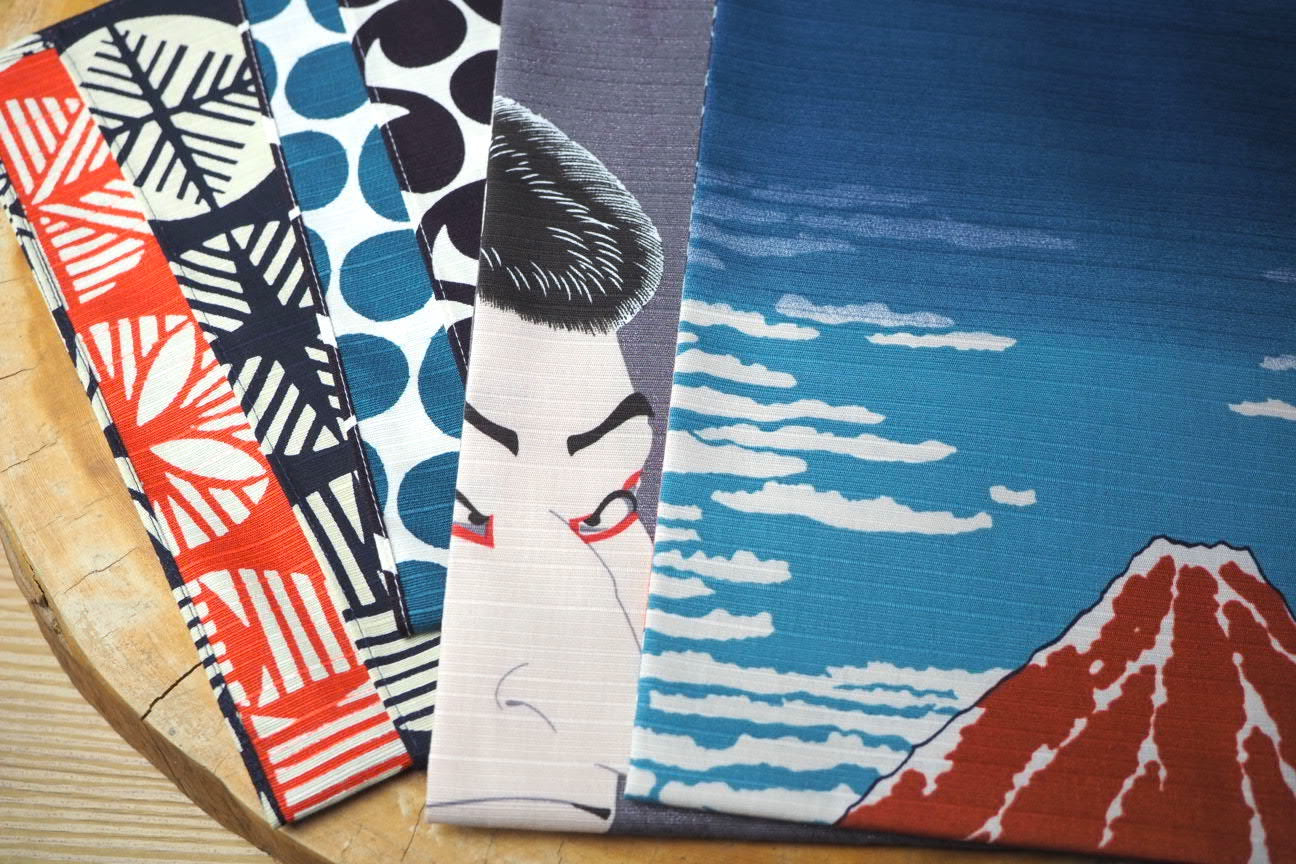
Approaching the roots of Furoshiki (Japanese wrapping cloth)
Furoshiki : A timeless essential in Japanese daily life.
Embraced for centuries in the everyday lives of the Japanese, Furoshiki remains a beloved item. Even today, it comes in various materials and patterns, offering not only the classic role of wrapping but also serving as a versatile essential. From its traditional use of wrapping items to becoming a lunch mat, transforming into an eco bag, or adding a touch of style as interior fabric, Furoshiki continues to be cherished for its multifunctional charm.
In this blog post, we'll embark on a journey to explore the roots of Furoshiki, unraveling the timeless appeal that has endured through generations.

- Roots of Furoshiki -
The origin of the term 'Furoshiki' lies in the combination of '風呂 furo' (bath) and '敷く shiku' (to spread). True to its name, Furoshiki was initially utilized as a spread for bathing, particularly in the context of traditional saunas rather than modern bathtubs. These cloths were employed on sauna dressing room floors, serving a dual purpose as both a mat and a means to wrap and carry garments to and from the sauna. Operating akin to a bath mat, Furoshiki not only contributed to bath culture but also functioned as a tool for wrapping belongings. This is the intriguing origin behind the name 'Furoshiki.
- The culture of '包む tsutsumu'(wrap) dates back to the Nara era -
While its roots lie in the act of 'spreading' or 'laying out' items, particularly in the context of bathing, the practice of '包む tsutsumu'(wrap) with fabric is believed to have existed even before the Nara era. For instance, valuable items such as treasures and offerings were not simply left exposed but were carefully wrapped in fabric before being stored. In ancient times, precursor items resembling Furoshiki, known as 'tsutsumi-fu,' can be found in the collection of the Shosoin repository at the Todaiji Temple. The cultural significance of '包む tsutsumu,' symbolizing the act of cherishing and protecting, has been passed down among the Japanese for over 1300 years.

In the past, Furoshiki was even used as a bath mat, and today, its uses have expanded beyond merely wrapping and storing. It has transformed into a bag, a garment, and serves various other purposes.

We look forward to bringing you the evolving charm of Furoshiki, as it continues to undergo diverse changes along with the times in our future blog posts.
Wa-in stocks beautiful Furoshiki selections.
Find your favourite colour, pattern and size.

We hope you enjoyed this story about the roots of Furoshiki.
Thank you for reading it to the end.
See you on the next story.

